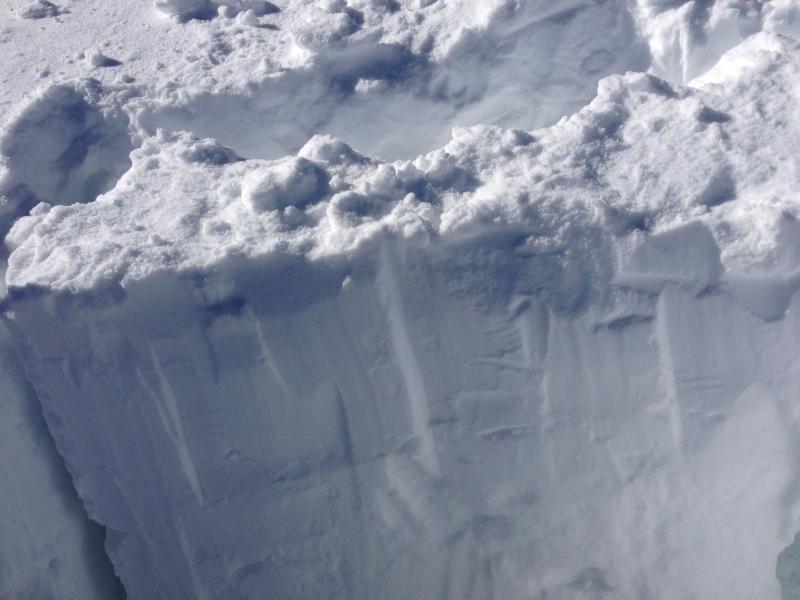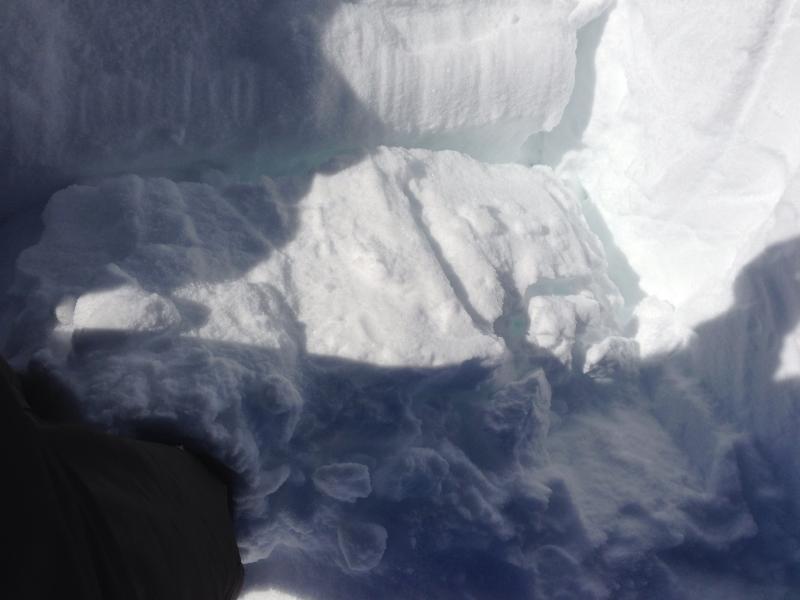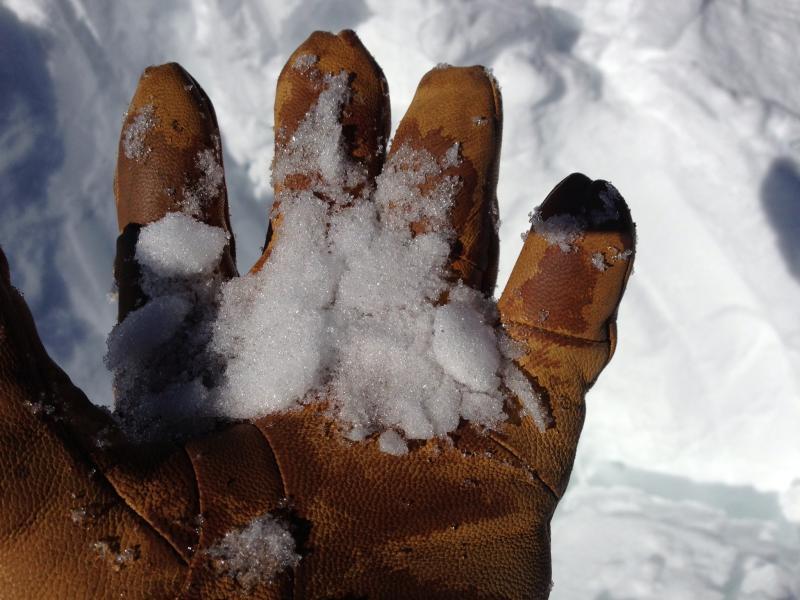Red Flags
Wind Loading
Poor Snowpack Structure
Red Flags Comments
Interesting times right now with regard to the snowpack. Prior to last week's storms, we dug some pits in this general area to assess the quality of the snowpack as well as to hypothesize about how additional loading might impact the situation. At the time, the early January facets were buried approx 15cm below the snow surface. After various quick ECTs in various locations, this weak layer appeared to be active, but not overly so. In almost every case, we were unable to establish propagation in our testing. Shovel shear tests highlighted a barely cohesive slab sitting on this faceted weak layer. Upon removal of the slabs, the shear surfaces were of a q2/q3 quality. We were feeling pretty good about the stability at the time despite the presence of many lemons.
Fast forward to this week. The storm(s) brought snow with variable densities along with wind loading on several aspects. We returned to the summit today to investigate further. At this point we've waited a few days for things to settle down. I decided to dig a pit directly above the tree stand in the center of the E/NE facing slide path, tovar below the summit. The slope is not very steep in this location; the gradient increases significantly directly above the tree stand and the slope finishes in the mid-to-high 30s.
In the area where I chose to dig, the offending weak layer is now 50-60cm below the snow surface. Currently, there is a definitive slab sitting on these facets due to the combination of variable density new snow/new wind loading/older wind loading. After two ECTs in similar locations I could not establish column propagation. The weak layer is measuring around a 4F hardness at this point compared to a mostly 1F surrounding snowpack (not including the most recent new snow). I subjected my column to a shovel shear test after my ECTs showed no propagation. After a few tugs on one end of my column, the entire 90cm+ slab pulled away at the weak layer fairly easily/quickly. This wasn't unexpected, but the size/stability of the slab raised a few eyebrows. After removing the slab, the shear surface was definitely q3 quality - not very clean, quite lumpy, etc. (see pic 2). Interestingly, on this slope in this particular location, the weak layer appears to be on the mend. I squeezed a handful of the offending facets together and I was able to form small snowballs (see pic 3 - perhaps this is a combination of additional weight, depth, and exposure to the sun).
We bailed on this slope for a number of reasons. I am not confident that the data I took in the upper section of the slope correlates to the shadier, steeper sections below. Additionally, we were, at the very least, able to identify the presence of a fairly stout slab in a location that might serve as a starting zone in certain cases. For now, I would place this in the, "low probability, medium-high consequence" category. With good snow in so many other places, why push it?





